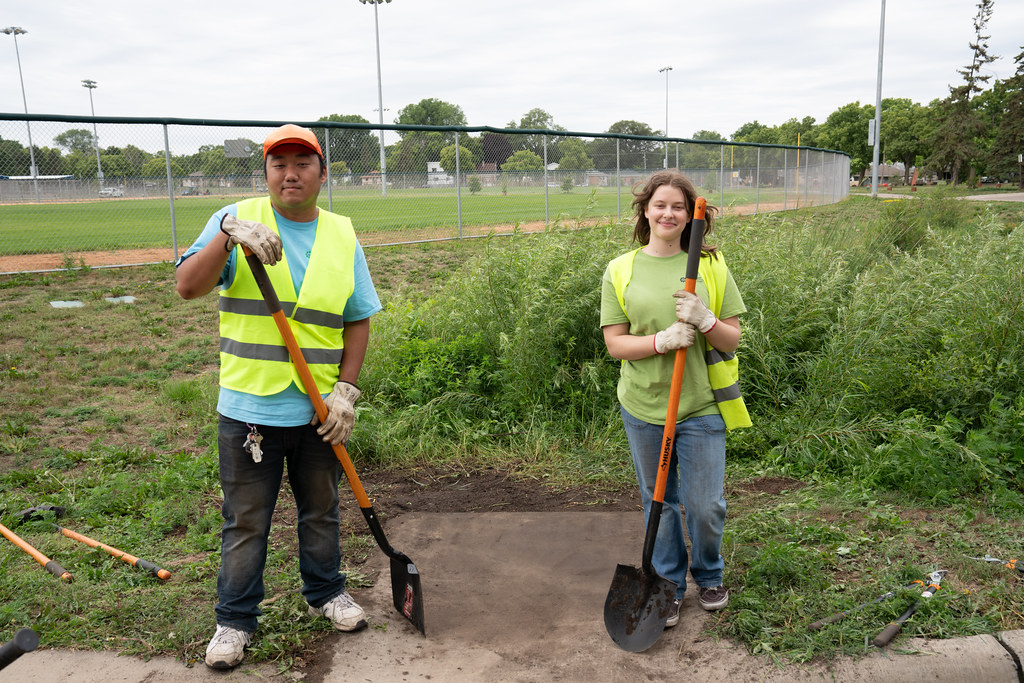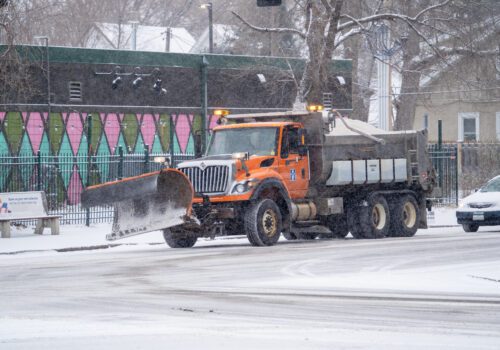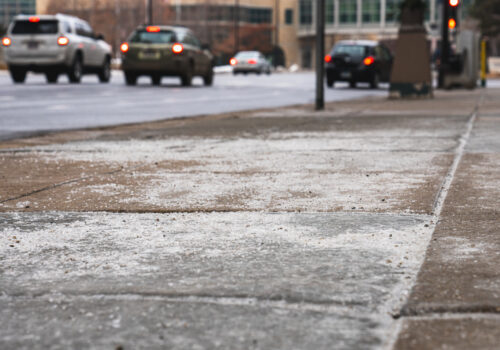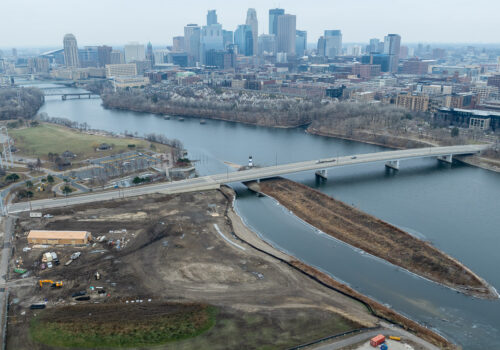News / August 28, 2023
In Minneapolis, the Green Workforce of the Future has GRIIT

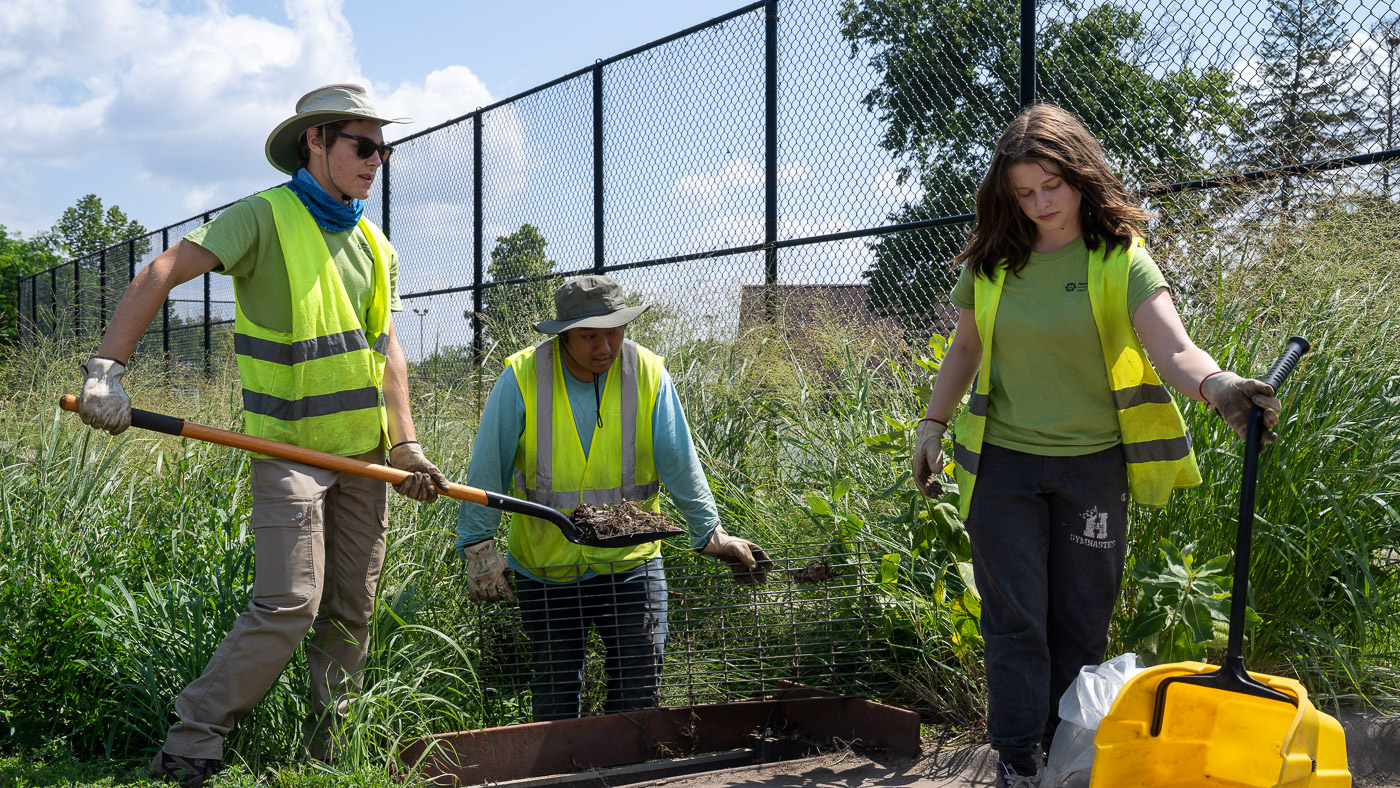
Rose Hylton and Noah Sullivan spent much of their summer visiting Minneapolis parks, but not for any of the typical reasons one might expect. The Minneapolis teenagers were on a mission to study an often-overlooked feature of the parks system: the rain gardens, swales, and other green infrastructure that manages stormwater and plays a critical role in the parks’ ecology.
From June through August, the pair logged more than 300 inspections at dozens of parks. They recorded problems like eroding soil, overgrown vegetation, and clogged infiltration basins, uploading detailed notes and photos from their iPads. Wherever possible, they used hand tools to remove sediment and debris and pull invasive plants to help keep the systems functioning.
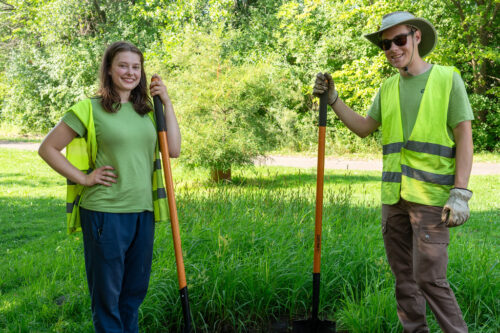
Hylton and Sullivan are the first participants in a pilot program to create a new pathway for the green workforce of the future. The Green Infrastructure Inspection Team (GRIIT) is designed to address two growing needs: a program to maintain green infrastructure and a workforce to implement it.
The MWMO and the Minneapolis Park and Recreation Board (MPRB) co-launched GRIIT this year as an extension of the Mississippi River Green Team, their joint youth employment and conservation program for Minneapolis teens. Now in its 16th year, the two-year Green Team program is designed to expose young people to environmental careers. GRIIT goes a step further by offering a third year of more focused, specialized training.
“The MWMO has an interest in developing a skilled workforce around green infrastructure,” said MWMO Outreach Principal Abby Moore. “We recognized that the Green Team is only a two-year program, and we had an opportunity to continue building their skill set and going into more advanced work around green infrastructure inspection and maintenance.”
Maintaining Green Infrastructure: A New Challenge for Cities
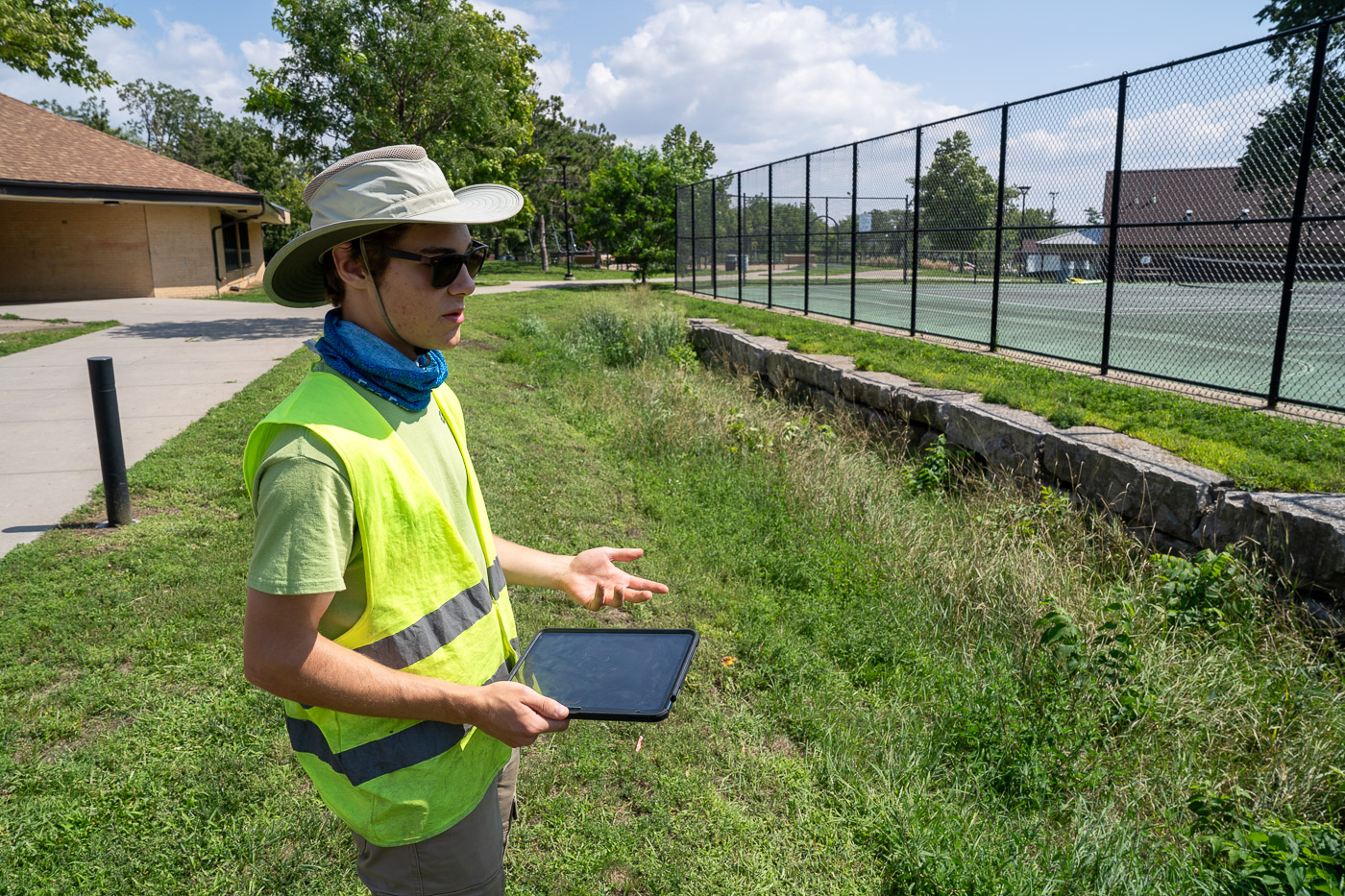
In the past, city infrastructure was designed to move stormwater off of the landscape as quickly as possible through a system of gutters, storm drains and stormsewers. This resulted in a constant flow of polluted runoff into waterbodies, as well as flooding whenever the system became clogged or overwhelmed.
Green stormwater infrastructure (GSI) practices like rain gardens and tree trenches allow stormwater to infiltrate naturally into the ground, filtering out pollutants and reducing the burden on local stormsewers. GSI also typically incorporates a variety of native plants and trees that create new habitat, offering a much more sustainable and ecologically rich solution for stormwater management.
The use of green infrastructure has grown as cities recognize its benefits. But the adoption of GSI has outpaced cities’ ability to maintain it. Public works departments are generally trained and staffed to address core maintenance needs for things like streets, sewers and solid waste. Agencies that are already feeling stretched thin might be reluctant to take on additional tasks. Moreover, maintaining green stormwater infrastructure requires different training and skill sets as compared to, say, maintaining turfgrass lawns.
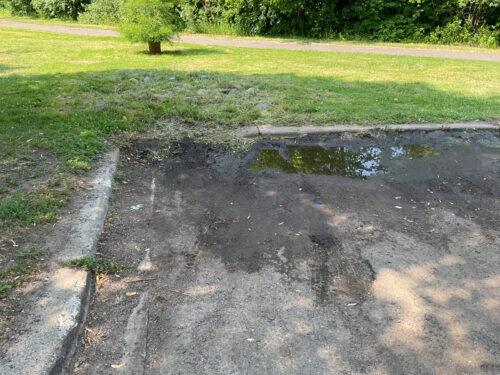
GRIIT and programs like it are intended to help create a new green workforce with the right knowledge and skills for the job. For the MPRB, it’s a welcome start.
“I think stormwater is one of those things that is sort of invisible to the average person living in Minneapolis, and so it’s easy not to put time, energy and money into it until something goes wrong,” said Gretchen Engstrom, the Environmental Education Supervisor with MPRB.
One of the primary goals of this year’s GRIIT pilot is to create a comprehensive database of GSI maintenance needs within the Minneapolis parks system — something Engstrom said MPRB has wanted for years. She hopes the GRIIT pilot and its resulting database will help build momentum for a more formal, permanent green infrastructure maintenance effort within MPRB — and perhaps even a full-time GRIIT supervisor one day.
Engstrom said the backlog of maintenance needs within Minneapolis parks will only grow more urgent as the city grapples with the impacts of a changing climate.
“With climate change, we’re having more extreme weather events, and we need to have land systems that can handle that better,” she said.
Learning How to Train the Green Workforce of the Future
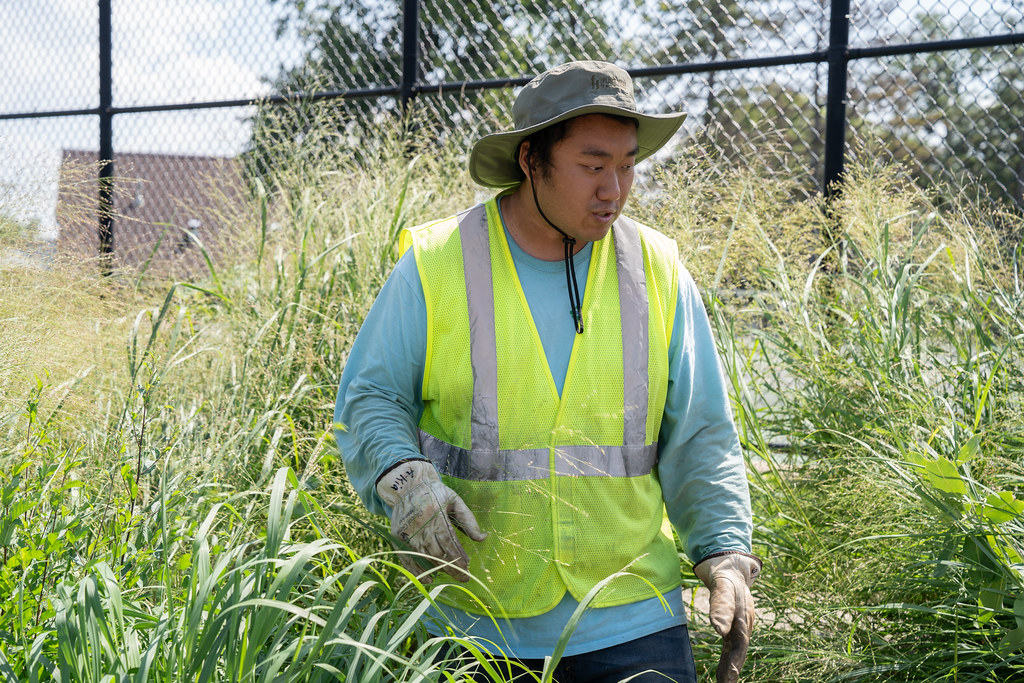
Although GRIIT builds on the success of the existing Green Team, MWMO and MPRB staff had to develop the new program from scratch. A key step in that process was the hiring of GRIIT program lead Akia Vang.
Vang, a former Green Team member and MWMO intern (and current member of the MWMO’s Citizen Advisory Committee), had an ideal background to serve as the first GRIIT supervisor. Now a graduate student at the University of Minnesota’s Humphrey School of Public Affairs, he had trained on how to inspect green infrastructure while interning at the MWMO.
Vang started work in early spring to help develop the program. He began by reviewing existing MWMO and MPRB project databases. To prepare for his new role, the MWMO also paid for him to attend a stormwater best management practices (BMP) training course at the University, and he spent some time working on a crew for a local landscape restoration company.
Meanwhile, the MWMO and MPRB put out a call for youth who might be interested in joining GRIIT. Since prior experience working outdoors in environmental jobs was a prerequisite to be on the team, it was challenging to find qualified youth to participate in this pilot year. Luckily, Hylton, a former Green Team member, and Sullivan, who completed a similar youth program at the Minnesota Valley National Wildlife Refuge, applied and formed a small but mighty crew for this first year.
With the team finally assembled, they set out to create something that had never existed: a database of GSI maintenance needs at Minneapolis parks.
They learned some lessons along the way. Vang said the team found stormwater BMPs that MPRB staff didn’t know existed. At Theodore Wirth Park, they discovered stormwater infrastructure that was overgrown with vegetation to the point of being nearly invisible.
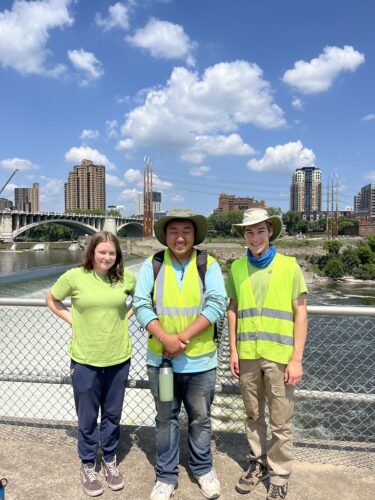
Vang said it wasn’t always clear how well some of the older infrastructure was infiltrating water, but documenting its condition should help MPRB decide what to do with it.
“It really is kind of a program to establish the baseline of what kind of stormwater infrastructure the Park Board has, what is working, what is not, and what can we do to improve the efficiency,” he said.
For Sullivan, who plans to pursue a career in civil engineering, the experience provided some valuable perspective on the complex relationship between land and water.
“This has helped me understand a lot of stormwater management and kind of rethinking the idea of using water as a resource instead of just trying to move it as quickly as we can to the river,” he said.
Hylton said she wants to pursue a career in an environmental field, although not necessarily in stormwater. She said she’s still exploring her career options but liked the fact that a third year on the Green Team became an option for her.
“Part of the reason I took this job was just because it was like the Green Team year three, so it was an easy transition to this job,” she said.
Hylton and Sullivan concluded their work with GRIIT on Aug. 25. Hylton is now preparing for her junior year of high school, while Sullivan is entering his freshman year at the University of Minnesota. Vang plans to remain in his position until mid-September, helping to evaluate the first year of the program and develop a framework for its next steps.
